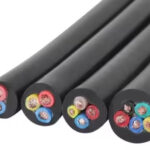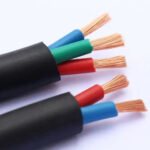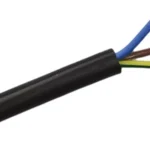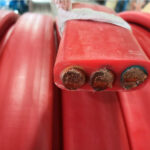Understanding Types of Copper Cables in Modern Infrastructure
Types of copper cables form the backbone of electrical and networking infrastructure worldwide. From basic electrical wiring to sophisticated types of network cabling systems, understanding different copper wire types is essential for proper system design and installation. This comprehensive guide explores various types of copper cable applications across industries.
Essential Categories of Copper Wire Types
Copper wire types vary significantly based on construction, application, and performance requirements. Types of copper wire include solid conductors, stranded conductors, and specialized configurations designed for specific applications. Understanding each type of copper wire helps determine the optimal solution for different electrical and networking requirements.
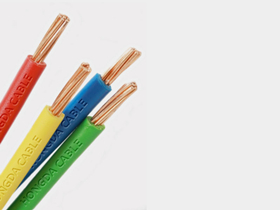
Copper Core PVC Insulation House Wiring Electrical Wire 450/750V
Power and Control: Types of Copper Cables for Electrical Systems
Low-Voltage Building Wire
Types of copper cables for residential and commercial electrical systems include THHN, THWN, and Romex cables. These copper wire types serve different applications from basic branch circuits to specialized industrial installations requiring specific environmental protection.
Medium-Voltage Distribution Cables
Industrial types of copper cable for medium-voltage applications include XLPE-insulated cables, EPR cables, and paper-insulated lead-covered (PILC) cables. Each copper wire type offers distinct advantages for different voltage levels and environmental conditions.
High-Voltage Transmission Cables
Types of copper cables for high-voltage transmission include oil-filled cables, gas-insulated cables, and cross-linked polyethylene (XLPE) cables. These specialized copper wire types handle substantial power transmission requirements in utility and industrial applications.
Communication Systems: Types of Network Cabling Solutions
Twisted Pair Cables
Types of network cabling utilizing copper conductors include unshielded twisted pair (UTP) and shielded twisted pair (STP) cables. These types of copper cables used in networking provide reliable data transmission for various communication applications.
Category-Rated Network Cables
Types of copper cabling for network applications include Category 5e, Category 6, Category 6A, and Category 8 cables. Each type of copper wire supports different bandwidth requirements and transmission distances for modern networking needs.
Coaxial Cable Varieties
Types of copper cables for RF and broadband applications include RG-6, RG-11, and RG-59 coaxial cables. These specialized copper wire types serve cable television, internet, and telecommunications applications requiring specific impedance characteristics.
Industrial Applications: Specialized Copper Wire Types
Motor and Generator Windings
Types of copper wire for motor applications include magnet wire, random-wound coils, and form-wound coils. These specialized copper wire types feature specific insulation systems designed for high-temperature and high-voltage motor applications.
Control and Instrumentation Cables
Industrial types of copper cables for control systems include multi-conductor control cables, instrumentation cables, and computer cables. Each type of copper wire serves specific signal transmission requirements in automated industrial systems.
Flexible and Portable Cables
Types of copper cable for mobile applications include welding cables, portable power cables, and extension cords. These copper wire types feature enhanced flexibility and durability for temporary and mobile electrical applications.
Networking Infrastructure: Types of Copper Cables Used in Networking
Ethernet Cable Standards
Types of copper cables used in networking include various Ethernet standards supporting different data rates and applications. Types of network cabling range from basic 10BASE-T to advanced 40GBASE-T applications requiring specialized copper wire types.
Horizontal and Backbone Cabling
Types of copper cabling in structured networks include horizontal cables connecting workstations to telecommunications rooms and backbone cables linking different floors or buildings. Each application requires specific types of copper cable designed for distance and performance requirements.
Patch Cables and Jumpers
Types of network cabling components include patch cords, cross-connect jumpers, and equipment cords. These types of copper cables provide flexible connections between network equipment and structured cabling systems.
Residential Applications: Common Copper Wire Types
House Wiring Systems
Residential types of copper wire include non-metallic sheathed cable (Romex), armored cable (BX), and metal-clad cable (MC). Each copper wire type serves different applications based on installation requirements and local electrical codes.
Service Entrance Cables
Types of copper cables for electrical service connections include service entrance (SE) cables, underground service entrance (USE) cables, and mobile home feeder cables. These copper wire types handle the primary electrical connection between utility systems and residential properties.
Appliance and Equipment Cables
Specialized residential types of copper cable include appliance cords, extension cords, and equipment cables. These copper wire types feature specific configurations for different household electrical equipment and appliances.
Automotive Industry: Specialized Types of Copper Wire
Primary Wire Applications
Automotive types of copper wire include primary wire for general electrical circuits, high-temperature wire for engine compartment applications, and marine-grade wire for harsh environments. Each copper wire type meets specific automotive electrical requirements.
Battery and Charging Cables
Electric vehicle applications require specialized types of copper cables including battery cables, charging cables, and high-voltage interconnects. These copper wire types handle substantial current loads while maintaining safety and reliability standards.
Communication and Data Cables
Modern vehicles utilize various types of copper cable for communication networks including CAN bus cables, LIN bus cables, and multimedia cables. These specialized copper wire types support advanced vehicle electronics and infotainment systems.
Construction Methods: Types of Copper Cabling Installation
Conduit and Raceway Systems
Types of copper cabling installation methods include rigid metal conduit, electrical metallic tubing (EMT), and flexible metal conduit systems. The choice of copper wire type often depends on the installation method and environmental protection requirements.
Cable Tray Applications
Industrial types of copper cables for cable tray installation include tray cables (TC), power and control tray cables (PLTC), and instrumentation tray cables (ITC). These copper wire types feature specialized constructions for cable tray mounting and support.
Direct Burial Systems
Underground applications require specific types of copper cable including direct burial cables, underground residential distribution (URD) cables, and underground feeder (UF) cables. These copper wire types feature enhanced moisture and corrosion protection.
Technical Specifications: Copper Wire Type Characteristics
Conductor Construction
Types of copper wire vary in conductor construction including solid, stranded, and compact stranded configurations. Each copper wire type offers different benefits regarding flexibility, current capacity, and installation requirements.
Insulation Materials
Types of copper cables utilize various insulation materials including PVC, XLPE, EPR, and specialized compounds. The insulation type determines the copper wire type suitability for different voltage levels, temperatures, and environmental conditions.
Shielding and Armor Options
Protected types of copper cable include foil-shielded, braided-shielded, and armored constructions. These enhanced copper wire types provide electromagnetic interference protection and mechanical protection for demanding applications.
Performance Standards: Types of Network Cabling Requirements
Data Transmission Capabilities
Types of network cabling support different data transmission rates from basic voice communications to high-speed data networks. Advanced types of copper cables used in networking enable gigabit and multi-gigabit Ethernet applications.
Distance and Bandwidth Limitations
Different types of copper cabling have specific distance and bandwidth limitations. Understanding these characteristics helps select appropriate copper wire types for specific networking applications and performance requirements.
Testing and Certification
Types of network cabling require different testing procedures and certification standards. Proper testing ensures installed types of copper cables meet performance specifications for reliable network operation.
Market Analysis: Copper Wire Types Demand Trends
Growing Application Sectors
Current market trends show increasing demand for specialized types of copper cables in electric vehicle infrastructure, renewable energy systems, and data center construction. These sectors drive innovation in copper wire types and applications.
Technology Integration
Types of copper cabling continue evolving to support emerging technologies including Internet of Things (IoT) devices, smart building systems, and industrial automation. Advanced copper wire types enable these technological developments.
Sustainability Initiatives
Environmental considerations influence types of copper cable selection through recycling programs and sustainable manufacturing practices. Eco-friendly copper wire types support green building initiatives and environmental compliance requirements.
Installation Guidelines: Types of Copper Cables Best Practices
Safety Requirements
Installing different types of copper wire requires compliance with electrical codes including NEC, IEC standards, and local regulations. Proper installation techniques ensure safe operation across all copper wire types and applications.
Environmental Considerations
Selecting appropriate types of copper cables requires evaluating environmental factors including temperature, moisture, chemical exposure, and mechanical stress. Environmental conditions determine suitable copper wire type for specific installations.
Quality Assurance
Types of copper cabling installation requires quality control procedures including conductor testing, insulation verification, and performance validation. Quality assurance ensures reliable operation of installed copper wire types.
Future Developments: Advanced Types of Copper Cables
Smart Cable Technologies
Emerging types of copper cables incorporate embedded sensors and monitoring capabilities enabling real-time performance assessment. These intelligent copper wire types support predictive maintenance and system optimization.
Enhanced Materials
Advanced materials development improves types of copper cable performance through enhanced insulation systems, improved conductor designs, and specialized protective coatings. Innovation in copper wire types continues advancing electrical and networking capabilities.
Industry 4.0 Integration
Types of network cabling evolution supports Industry 4.0 initiatives through enhanced data transmission capabilities and integration with digital systems. Advanced copper wire types enable smart manufacturing and automated systems.
Cost Considerations: Types of Copper Wire Economics
Initial Investment Analysis
Different types of copper cables have varying initial costs based on construction complexity and performance requirements. Cost analysis helps select appropriate copper wire types balancing performance and budget considerations.
Lifecycle Cost Evaluation
Types of copper cabling lifecycle costs include installation, maintenance, and replacement expenses. Understanding total ownership costs helps optimize copper wire type selection for long-term value.
Return on Investment
Proper selection of types of copper cable provides excellent return on investment through reliable performance, reduced maintenance, and extended service life. Quality copper wire types offer superior long-term value.
Regional Applications: Global Types of Copper Cables Usage
North American Standards
Types of copper wire in North America follow NEC and CSA standards with specific requirements for residential, commercial, and industrial applications. Regional copper wire types reflect local codes and installation practices.
European Specifications
European types of copper cables comply with IEC and CENELEC standards emphasizing safety and environmental requirements. European copper wire types often feature enhanced fire safety and environmental protection characteristics.
International Markets
Global types of copper cabling applications vary based on local standards, environmental conditions, and infrastructure requirements. International copper wire types accommodate diverse regional needs and specifications.
Conclusion: Selecting Optimal Types of Copper Cables
Understanding various types of copper cables is essential for successful electrical and networking system design. From basic copper wire types for residential applications to sophisticated types of network cabling for data centers, proper selection ensures optimal performance and reliability.
The diversity of types of copper cable available today reflects the broad range of applications requiring electrical connectivity. Whether selecting copper wire types for power distribution or types of copper cables used in networking, understanding specific requirements and characteristics guides optimal selection.
As technology continues advancing, types of copper cabling will evolve to meet new challenges while maintaining their essential role in electrical and communication infrastructure. The versatility and reliability of various copper wire types ensure these materials remain central to modern electrical and networking systems.
Future developments in types of copper cables will continue supporting infrastructure advancement while maintaining the proven performance characteristics that make copper the preferred conductor material across diverse applications.

